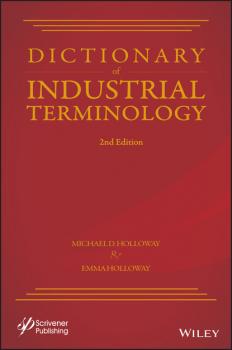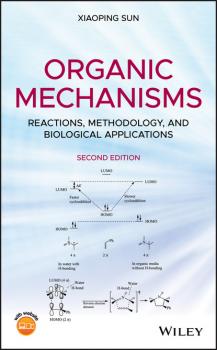Химия
Различные книги в жанре ХимияApplied Organic Chemistry
An indispensable guide for all synthetic chemists who want to learn about the most relevant reactions and reagents employed to synthesize important heterocycles and drugs! The synthesis of natural products, bioactive compounds, pharmaceuticals, and drugs is of fundamental interest in modern organic chemistry. New reagents and reaction methods towards these molecules are being constantly developed. By understanding the mechanisms involved and scope and limitations of each reaction applied, organic chemists can further improve existing reaction protocols and develop novel efficient synthetic routes towards frequently used drugs, such as Aspirin or Penicillin. Applied Organic Chemistry provides a summary of important (name) reactions and reagents applied in modern organic chemistry and drug synthesis. It covers rearrangement, condensation, olefination, metathesis, aromatic electrophilic substitutions, Pd-catalyzed C-C bond forming reactions, multi-component reactions, as well as oxidations and reductions. Each chapter is clearly structured, providing valuable information on reaction details, step-by-step mechanism, experimental procedures, applications, and (patent) references. By providing mechanistic information and representative experimental procedures, this book is an indispensable guide for researchers and professionals in organic chemistry, natural product synthesis, pharmaceutical, and medicinal chemistry, as well as post-graduates preparing themselves for a job in the pharmaceutical industry. Hot Topic: Reviews important classes of organic reactions (incl. name reactions) and reagents in medicinal chemistry. Useful: Provides information on reaction details, common reagents, and functional group transformations used to synthesize natural products, bioactive compounds, drugs, and pharmaceuticals, e.g. Aspirin, Penicillin. Unique: For every reaction the mechanism is explained step by step, and representative experimental procedures are given, unlike most books in this area. User-friendly: Chapters are clearly structured making it easy for the reader to compare different reactions. Applied Organic Chemistry is an indispensable guide for researchers and professionals in organic chemistry, natural product synthesis, pharmaceutical, and medicinal chemistry, as well as post-graduates preparing themselves for a job in the pharmaceutical industry.
Explosion Vented Equipment System Protection Guide
This book provides complete step by step instruction, practical examples, guidance, and worksheets to meet the needs of a company licensed or competent unlicensed engineer that, by education or experience, understands the concepts presented in this book. This book will help engineers ensure that their company is in compliance with the new standard of dust collection systems by mitigating the exposed risks. The data is presented in tables and graphs along with examples that are based on actual, proven, practical designs to clearly illustrate application of the information provided. The book is broken down into two parts. Part 1 details structural analysis and design for reinforcing dust handling systems including Design criteria and general theory, Dust collector wall, roof and hopper sections, Access doors, hinges and latches, explosion vent ducts, blast deflectors, and filter bag cage design, Explosion vent duct weather covers, etc. Part 2 covers explosion relief elements and explosion flowing pressure analyses.
Organic Mechanisms
This book helps readers move from fundamental organic chemistry principles to a deeper understanding of reaction mechanisms. It directly relates sophisticated mechanistic theories to synthetic and biological applications and is a practical, student-friendly textbook.<br /><br /> <div id="_mcePaste" style="position: absolute; left: -10000px; top: 0px; width: 1px; height: 1px; overflow: hidden;">Presents material in a student-friendly way by beginning each chapter with a brief review of basic organic chemistry, followed by in-depth discussion of certain mechanisms</div> <div id="_mcePaste" style="position: absolute; left: -10000px; top: 0px; width: 1px; height: 1px; overflow: hidden;"> </div> <div id="_mcePaste" style="position: absolute; left: -10000px; top: 0px; width: 1px; height: 1px; overflow: hidden;">Includes end-of-chapter questions in the book and offers an online solutions manual along with PowerPoint lecture slides for adopting instructors</div> <div id="_mcePaste" style="position: absolute; left: -10000px; top: 0px; width: 1px; height: 1px; overflow: hidden;"> </div> <div id="_mcePaste" style="position: absolute; left: -10000px; top: 0px; width: 1px; height: 1px; overflow: hidden;">Adds more examples of biological applications appealing to the fundamental organic mechanisms</div> <div> <ul> <li>Presents material in a student-friendly way by beginning each chapter with a brief review of basic organic chemistry, followed by in-depth discussion of certain mechanisms</li> <li>Includes end-of-chapter questions in the book and offers an online solutions manual along with PowerPoint lecture slides for adopting instructors</li> <li>Adds more examples of biological applications appealing to the fundamental organic mechanisms</li> </ul> </div>
An Introduction to Molecular Biotechnology
Completely updated in line with the rapid progress made in the field, this new edition of the highly-praised textbook addresses powerful new methods and concepts in biotechnology, such as genome editing, reprogrammed stem cells, and personalized medicine.<br> An introduction to the fundamentals in molecular and cell biology is followed by a description of standard techniques, including purification and analysis of biomolecules, cloning techniques, gene expression systems, genome editing methods, labeling of proteins and in situ-techniques, standard and high resolution microscopy. The third part focuses on key areas in research and application, ranging from functional genomics, proteomics and bioinformatics to drug targeting, recombinant antibodies and systems biology. The final part looks at the biotechnology industry, explaining intellectual property issues, legal frameworks for pharmaceutical products and the interplay between start-up and larger companies. The contents are beautifully illustrated throughout, with hundreds of full color diagrams and photographs.<br> Provides students and professionals in life sciences, pharmacy and biochemistry with everything they need to know about molecular biotechnology.<br>









